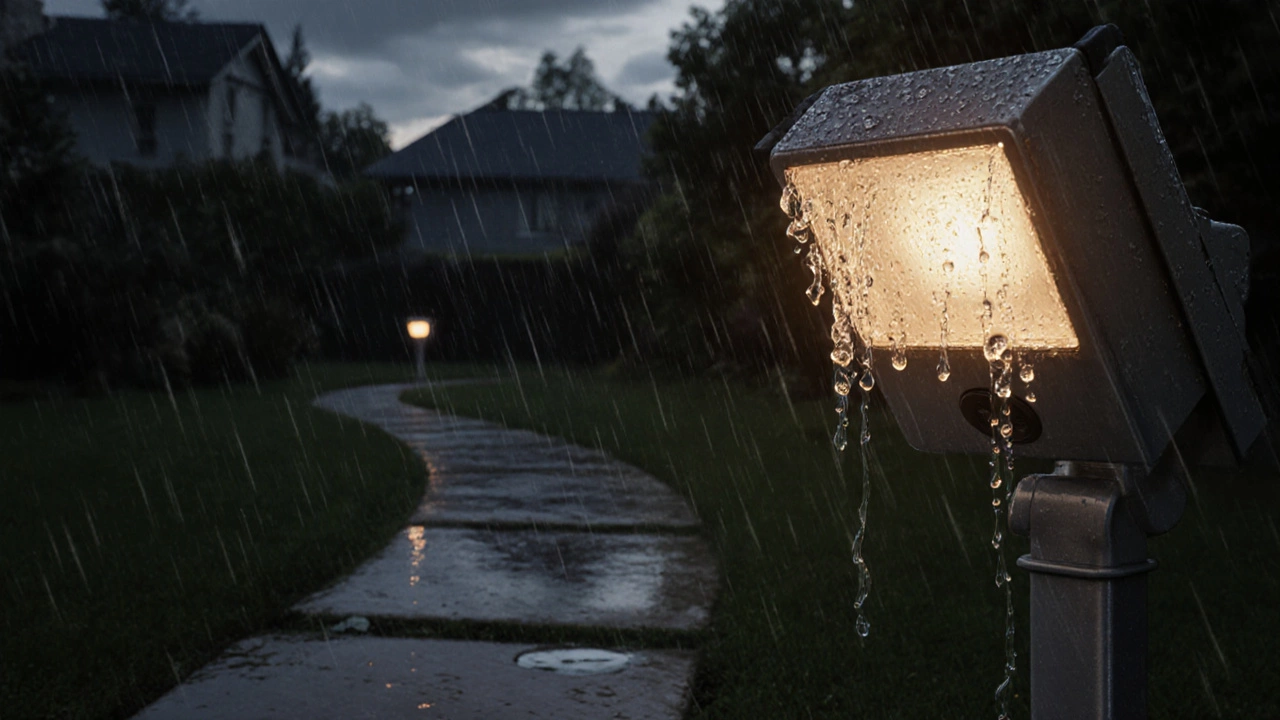When working with outdoor lights rain protection, the practice of shielding exterior lighting fixtures from rain, moisture, and water damage. Also known as weatherproof lighting, it ensures your lights stay bright and last longer.
One of the core pieces of weatherproof outdoor lighting, fixtures built with sealed housings and corrosion‑resistant parts. Also called rain‑proof lights, it outdoor lights rain protection relies on a solid IP rating, a numeric code that tells you how well a device resists water and dust. For garden or driveway use, an IP65 or higher rating means rain can hit the fixture for hours without a problem. Without the right rating, water can seep into seams, short the circuitry, and cut your illumination short.
Another important player is the LED floodlight, high‑output lighting that often sits on poles or under eaves. Known as security floodlight, it benefits from rain protection because moisture can dim the LED output and cause premature failure. Pairing a floodlight with a proper IP‑rated enclosure, stainless‑steel brackets, and a silicone seal makes sure the beam stays strong even during a downpour. In short, outdoor lights rain protection encompasses weatherproof designs, requires a suitable IP rating, and enables LED floodlights to deliver reliable illumination. First up, choose fixtures that list an IP rating clearly in the specs. If you see IP44, it can handle splashing water; IP66 will survive powerful jets. Next, think about where the light sits. Mounting a light too low or directly under an overhang can collect runoff, so give it a sloped cover or a drip edge. Materials matter, too—aluminum or powder‑coated steel resists rust better than cheap plastic. Finally, consider the bulb type. LED bulbs generate less heat, reducing condensation inside the housing, which is a hidden cause of foggy lenses.
Installation height plays a role in rain protection as well. According to our guide on the best height for security lights, placing a fixture 8‑10 feet up helps water run off the front while keeping the wiring out of puddles. Combine this with a sealed cable entry, and you eliminate the most common leak points. If you’re already using motion‑sensor lights, make sure the sensor has its own rating; a low‑rated sensor can fail even if the housing is fine.
Maintenance is the last piece of the puzzle. A quick wipe‑down after a heavy storm removes mineral deposits that can cloud the lens. Check the silicone gasket annually—replace it if it looks cracked. And if you notice flickering after rain, inspect the connector for signs of corrosion. By staying on top of these steps, you’ll extend the life of your lighting system and keep your property well lit, no matter how hard the weather pushes.
Below you’ll find a curated list of articles that dive deeper into each of these topics—from choosing the right IP rating to comparing floodlights and security lights, and even tips on bug‑free lighting. Browse the collection to get practical, step‑by‑step guidance that will help you set up a rain‑proof lighting system you can rely on.Key Factors for Rain‑Proof Outdoor Lighting

Learn how to keep outdoor lights working through rain with IP ratings, sealants, proper wiring, and easy maintenance tips.